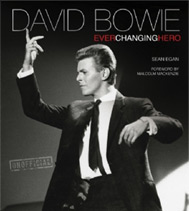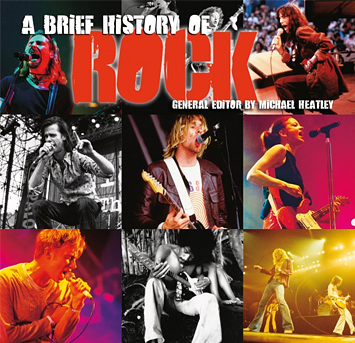and added to over the years. Often it is obvious from the instrument’s appearance that its final form is the result of several stages of building. Organ-Building Families German Baroque organ builders such as the Fritzsche and Compenius families and Andreas Silbermann (1678–1734) and his brother Gottfried (1683–1753) increased the size and quality of the instrument and the variety of stops. ...
, barrels and music would seem unlikely bedfellows. Their alliance, however, goes back at least to the ninth century, when the first detailed description of a barrel organ appeared in an Arab treatise. Mechanics of the Barrel Organ The mechanical principle underlying all such instruments, from the automated organ and piano to the spectacular mechanical orchestras of ...
The term electric, or electromechanical, organ is used to describe instruments that produce sounds using a dynamo-like system of moving parts – as opposed to electronic organs that employ solid-state electronics. Laurens Hammond In the same way that ‘Hoover’ is used instead of ‘vacuum cleaner’, the very name ‘Hammond’ has become synonymous with electric organs. The Hammond organ was ...
Unlike all other instruments, the organ can actually form part of the building in which it performs and its effect on church architecture has been matched only by that of the choir. While the internal workings of the organ have changed little over the centuries, one thing that has changed is the organ case. Every instrument needs to be ...
The organ is an instrument of extremes – the biggest, the loudest, the lowest, the highest, the oldest, the newest and the most complex, it is also among the smallest, the most intimate, the most modest, and the simplest. Organ Extremes The aptly named portative organ – much played from the twelfth ...
recognize his instrument not only through the nineteenth but indeed well into the twentieth century, when electronic technology first helped the organist to manage the stops of a pipe organ and then produce the sound without benefit of pipes. Although pipe organs continue to be built, the advent of transistors in the 1960s, silicon chips in the 1980s ...
Although the early church had been hostile towards instrumental music, the organ was gradually adopted by Christianity following its rediscovery in the eighth and ninth centuries. Since then it has been a largely ecclesiastical instrument, though chamber organs have also been used for secular music in aristocratic houses. Most medieval organs were small, especially by modern standards. Indeed ...
The larger positive organ was not intended to be moved. The biggest difference between medieval and modern organs is that the positive organ’s pipes were all of the same diameter; the pitch was defined by the length. This caused variation in tone quality across the range, making it ‘flutier’ as the pipes became shorter. Gradually organ-builders introduced ‘reed’ pipes, ...
Like its close relation the concertina, the accordion is a glorified mouth organ, in which the ‘reeds’ (now generally made of tempered steel) are set in vibration by a rectangular bellows. The bellows are operated by the left hand, which also – as in all keyboard instruments – manipulates the so-called bass keyboard, in this case a ...
The celesta is a type of keyboard glockenspiel, with a range of four octaves upwards from middle C, and a damping pedal like a piano. Inside the body of the instrument is a series of chromatically tuned metal bars, which are struck with felt hammers when the performer plays the keyboard. Creation of the Celesta The celesta was ...
family. Cornetts, shawms, trombones and flutes also came in different sizes. Besides consort instruments, there were a few others that could be used as self-contained solo instruments. The organ, which had existed since Greek and Roman times, was becoming much more versatile, incorporating many more stops. The virginals, the precursor to the harpsichord, was ...
The affectionately nicknamed ‘squeeze box’ is the smallest of all conventional keyboard instuments, and the lowliest cousin of the organ (except the shirt-pocket harmonica). Strictly speaking, however, it has neither keys nor a keyboard. Nor has it a uniform shape. Playing Technique Whereas the standard English concertina is hexagonal, German and American models are square. The basic ...
A drum machine is an instrument that uses synthesized or sampled sound to emulate drums or other percussion, and allows the user to programme rhythmic patterns that can be chained together into songs. Rhythm Machines The history of the drum machine dates back as far as the 1930s, when Leon Theremin (1896–1993) was commissioned by composer Henry Cowell (1897–1965) ...
playing a Fender Stratocaster. The popularity of electric guitars was renewed in the 1990s and into the 2000s with the success of groups like Nirvana, Oasis and Radiohead. Electric Organ The electric organ emerged in the early twentieth century, originally designed as an economical and compact substitute for the larger pipe organ. During its history, makers have employed ...
century, further instruments were introduced, especially percussion instruments such as the piano, celeste, glockenspiel, xylophone, vibraphone, cimbalom and tubular bells and occasionally an organ, saxophone, guitar, mandolin, or ondes martenot. Since about 1950, non-western percussion instruments such as marimbas, tuned gongs, tom-toms and bubams have become increasingly ...
AUTHORITATIVE
An extensive music information resource, bringing together the talents and expertise of a wide range of editors and musicologists, including Stanley Sadie, Charles Wilson, Paul Du Noyer, Tony Byworth, Bob Allen, Howard Mandel, Cliff Douse, William Schafer, John Wilson...
CURATED
Classical, Rock, Blues, Jazz, Country and more. Flame Tree has been making encyclopaedias and guides about music for over 20 years. Now Flame Tree Pro brings together a huge canon of carefully curated information on genres, styles, artists and instruments. It's a perfect tool for study, and entertaining too, a great companion to our music books.

David Bowie
Fantastic new, unofficial biography covers
his life, music, art and movies, with a
sweep of incredible photographs.


